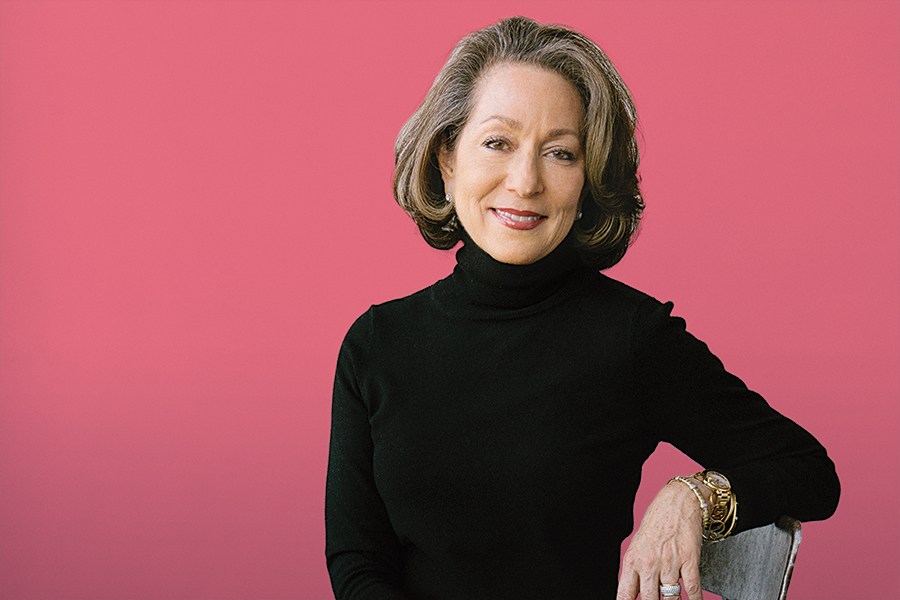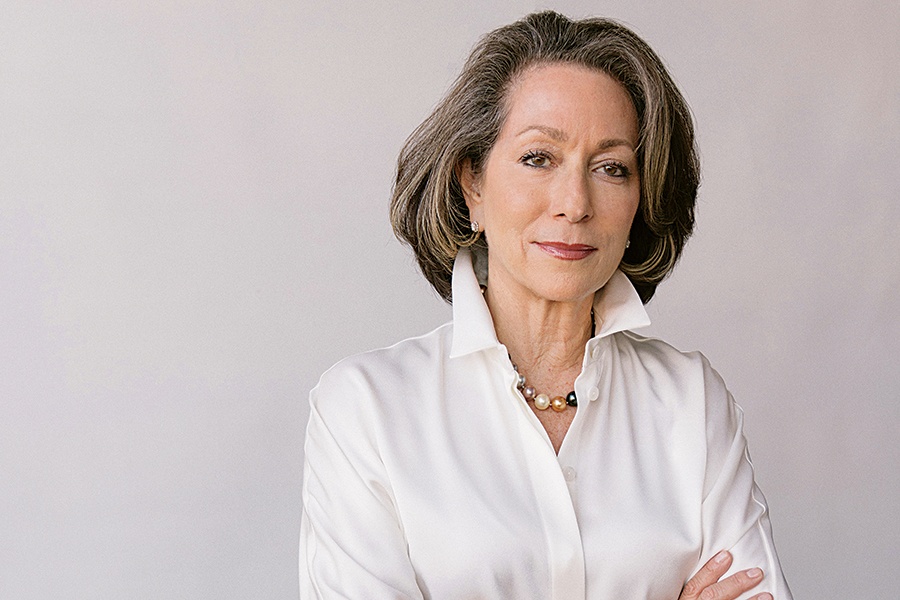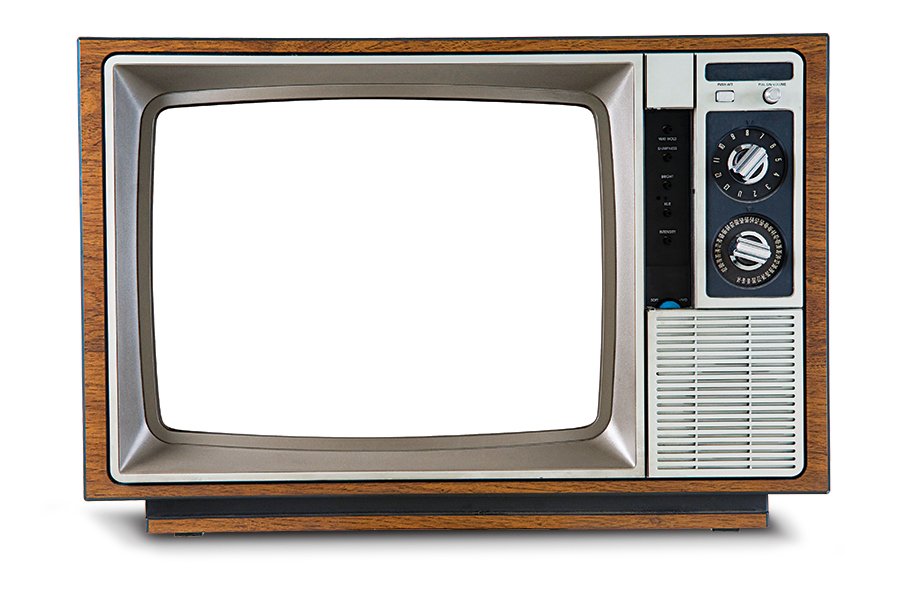The Interview: GBH President and CEO Susan Goldberg
The veteran newsroom leader talks the future of journalism, being the first woman to hold the public station's top position, and Cookie Monster.

GBH President and CEO Susan Goldberg. / Photo by Celeste Sloman
Can you ever have too many tote bags? For Susan Goldberg, the answer is a definitive no. So it makes sense that last month she became president and CEO of GBH, Boston’s behemoth public television and radio station. The Midwest native comes to the role after eight years as National Geographic’s editor in chief and holding top positions at some of the country’s most prestigious newspapers. We caught up with her just before her first day on the job to talk hard news, world travel, and her love for Antiques Roadshow.
How important is it to you to be the first female head of GBH?
Well, I’ve been the first female leader of a lot of different organizations: first female editor in chief of National Geographic, first female editor of the Cleveland Plain Dealer and the San Jose Mercury News, first female executive editor in Washington for Bloomberg News. I was even the first woman the Detroit Free Press sent to cover the governor and legislature back in 1984. Of course, that should have happened in 1934. So I’ve had this opportunity a lot of times, and I’m a little bit conflicted about it because while I’m honored to have this role, and I feel incredibly lucky and humbled, I wish that having a woman in charge was just the normal course of doing business, whether in public media, banking, politics, law, you name it. Every time a woman gets a great job, that shouldn’t be a national news story.
What prompted the move from National Geographic to GBH?
I was at Nat Geo for eight years, and I was incredibly proud of all the progress we made, the way we became much more diverse, much more inclusive, and we were telling stories for much broader audiences and a larger, wider range of stories. But I sort of felt like after 42 years in newsrooms, maybe it was time to try something else. And so, actually, I went to Arizona State University to work in their journalism department and also with their environmental school, but when GBH called back in August, I couldn’t possibly say no.
What’s the biggest story you’ve ever covered as a journalist?
Wow. Well, there’s a lot. Most recently, the pandemic. At National Geographic, we covered the heck out of the pandemic, and I thought it was so important to show how that was playing out not just in everybody’s backyard, not just in the United States, but around the world. That it was a global problem in search of a global solution. But another one that I think a lot about was back in 1989 when I was working at the San Jose Mercury News. I was the city editor, and the Loma Prieta earthquake struck on October 17, at 5:04 p.m. People called it “The World Series Earthquake” because right at that moment, the San Francisco Giants were playing the Oakland A’s, so people all over the country were aware of it. People all over the Bay Area were plunged immediately into the dark, but we had a generator at the newspaper, and we were able to deliver the news not just to customers of the Mercury News but all over the Bay Area. I felt like our ability to produce trusted information to people who were literally alone and literally in the dark was just a lifeline for a lot of people and made a huge difference. Our newsroom won the Pulitzer Prize for that.
What does a Pulitzer Prize look like?
Well, it’s a really impressive, amazing-looking certificate from Columbia University, which administers the prize.
Is a picture really worth a thousand words?
I think it can be, and I thought that even before I worked at National Geographic. But if you work at National Geographic for eight years, you see a lot of pictures that make you realize you don’t need a lot of words to explain it. Words can make it better because they can provide context, but so many pictures are so powerful you understand exactly what’s going on.
Hardest part of editing National Geographic?
At National Geographic, we had the ability to tell stories about the human journey, about science and history and culture…a lot of the same things that GBH focuses on. It was always hard deciding which stories to focus on because the world is full of so many amazing stories that need to be told. Deciding what to prioritize was tough, and I think the same will be true at GBH.
Biggest change you implemented at Nat Geo?
I think it was twofold. One was that we really focused on becoming much more of a digital-first organization. And now, National Geographic has one of the largest digital footprints and social media followings of any organization. The other thing, I think, that was the most important was really diversifying the staff and the kinds of stories we were telling in an attempt to be much more inclusive, much more transparent, and reach larger audiences.
What do you anticipate will be the biggest challenge at GBH?
I think both of those are still big challenges. We’ve got to continue to create the great content that people expect from linear television, but at the same time, to reinvent and reach people through digital and streaming platforms. It’s like flying the plane and refueling it at the same time.
Favorite National Geographic photo of all time?
I couldn’t possibly choose one. There are just too many. But I can tell you about a couple of photos I’m bringing with me to my office at GBH. One of them was taken by Lynsey Addario, who’s a conflict photojournalist. We were doing a special issue about women, and she took this image of a Marine corporal named Gabrielle Green, who was training for deployment. In it, she has a 200-pound man over her shoulders, and she’s walking up a steep ramp. This woman is just so amazing, and so powerful, and so strong. I get inspired every day looking at it, and whenever I think, “Can I do this?” I look at that photo, and I think, “Yeah, I can do this.” Another is a National Geographic cover that we ran in 2017. It was a special issue about gender, and the person on the cover was a nine-year-old transgender girl named Avery Jackson from Kansas City, Missouri. She looked right into the camera and said something incredibly important. She said, “The best thing about being a girl is, now I don’t have to pretend to be a boy.” Such a powerful and profound thing to say, and we put it on the cover. Out of all the covers that ran in my time as editor in chief, more people told me that cover made an impact on their lives and that it allowed them to have conversations in their own families that they could never have before. And I’m really proud of that.
Favorite PBS show?
Again, how can I choose? I love Frontline, and Nova, and American Experience. But really, my guilty pleasure, like many people, is that I just can’t get enough of Antiques Roadshow.
Any other guilty pleasures when it comes to TV? The Real Housewives or The Bachelor?
No, I’m not a Real Housewives fan. But I’ve always really liked Downton Abbey, and I really liked The Wire, and Breaking Bad, and stuff like that. But I’ll say one more thing about Antiques Roadshow. One of the most exciting things to me, after I was lucky enough to be offered this job, was that I asked, “Does this mean I could actually go to a filming of Antiques Roadshow?” And they promised I could!
Speaking of which—isn’t Downton Abbey just a frothy nighttime soap opera, like Dallas or Dynasty?
It’s way better than that, and it’s irresistible. I just can’t get enough of watching Maggie Smith.

GBH President and CEO Susan Goldberg. / Photo by Celeste Sloman
It’s always a challenge for public television to stay competitive and relevant in a media landscape that’s constantly shifting. Where do you see that leading for GBH?
I think every media organization has trouble breaking through at a time when everybody’s bombarded with information 24/7. So the real key is: We have fantastic content. How do we make sure people are getting that in a format and on the devices where they want to receive it? It’s breaking through. Getting heard. It’s not a content challenge at all. The teams produce amazing content across a wide variety of subjects. Our challenge, like everybody else’s, is getting noticed.
Do you think fundraising for public television needs a reboot?
Fundraising drives are an incredibly important part of how we continue to produce the amazing journalism and other programming that we’re giving to audiences, and they appreciate that. I’m really proud of the fact that so many people directly donate money to GBH, but I think we should figure out as many ways as possible to touch audiences so that they want to be involved and want to be part of our organization and
give back.
Okay, so how many tote bags do you own?
[Laughs.] Oh, probably four dozen. But you can never have too many.
I know that you love to travel. What’s the coolest place you’ve ever been?
Antarctica is one of the most amazing places I’ve ever been. Rwanda was also incredible because you see this amazing recovery that the country has had since the terrible genocide in 1994. It’s a thriving, fascinating country. I’ve been so lucky to go all over the world. I also really love Egypt, because when you go, you’re visiting history at the same time as you’re visiting a modern country. I love looking at those connections between history and the present.
Place that you’d most like to explore that you haven’t?
At the moment, it’s Greater Boston. I mean, honestly, I haven’t spent a ton of time in the Boston area, so I’m really excited about getting to know it.
Why do you think Cookie Monster never has any crumbs on him?
Maybe because he likes cookies so much, he eats every last bit.
What would you say is the current state of journalism?
Evolving. We’ve got a real trust deficit right now as journalists, and we have an incredible opportunity at GBH and in public media right now because we are trusted, and we need to double down on that when we tell stories. Our country’s very fraught and fractured at the moment, so I’m excited about the opportunity to create credible, honest, believable, and true content that people can use to make informed decisions and that can help our democracy.
What unique skill set do you bring to the table?
Although I’ve never worked in public media, I look at what GBH does, and it’s what I’ve done. It’s important to reach local audiences, and I spent a lot of my career in local news. It’s also important to reach national and international audiences, and I’ve had those experiences. So, I think about reinventing this legacy media organization for the moment that we’re in and for the future. And I think that positions me well.
How would you like people to think about GBH?
I’d like people to talk about GBH as an organization that informs and inspires and reveals, that helps them get through their day, maybe tells them something about the world, and helps to make them a better citizen of both their community and also a better global citizen.
Do you have any words for out- going GBH head Jon Abbott?
Yes. Thank you! He’s been an amazing leader, and I am deeply in his debt for creating these great teams, doing amazing work, and being so helpful and welcoming to me. So the two words really are: Thank you.

Photo by Spiderstock/Getty Images
By the Numbers
GBH Is Live!
A by-the-numbers look at the 71-year-old public media organization.
1951
Year GBH got its license for an FM radio station.
89.7
GBH’s place on the dial.
180,000
Average number of people each month who support GBH with a membership.
0
Number of stations that aired a live tennis match or a cooking show before GBH.
28
Number of Peabody Awards the GBH-produced show Frontline has won.
20
Number of times the GBH-produced Antiques Roadshow has been nominated for an Emmy.
First published in the print version of the January 2023 issue with the headline, “Going Public.”
Previously
- The Interview: MIT President Sally Kornbluth
- The Interview: Boston Public Schools Superintendent Mary Skipper
- The Interview: Boston Public Library President David Leonard
- The Interview: CNN Anchor and Correspondent Audie Cornish
- The Interview: Joey McIntyre of New Kids on the Block


